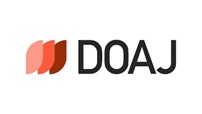Abstract
Recently strategic alliance between business firms has become prevalent to overcome increasing competitive threats and to supplement resource limitation of individual firms. As one of allianced sales promotion activities, a new type of discount program, so called "Alliance Card Discount", is introduced with the partnership of credit cards and loyalty cards. The program mainly pursues short-term sales growth by larger discount scheme while spends less through cost share among alliance partners. Thus this program can be regarded as cost efficient discount promotion. But because there is no solid evidence that it can really deliver profitable sales growth, an empirical study for its effects on sales and profit should be conducted. This study has two basic research questions concerning the effects of allianced discount program; 1)the possibility of sales increase 2) the profitability of the discount driven sales. In F&B industry, sales increase mainly comes from increased guest count. Especially in family restaurants, to increase the number of guests we need to enlarge the size of visitor group (number of visitors for one group) because customers visit by group in a special occasion. And because they pay the bill by group(table), the increase of sales per table is a key measure for sales improvement. The past researches for price & discount sensitivity and reference discount rate explain that price sensitive consumers have narrow reference discount zone and make rational purchase decision. Differently from all time discount scheme of regular sales promotions, the alliance card discount program only provides the right to get discount like discount coupon. And because it is usually once a month opportunity given by the past month usage level, customers tend to perceive alliance card discount as a rare chance to get. So that we can expect customers try to maximize the discount effect when they use the limited discount opportunity. Considering group visiting practice and low visit frequency of family restaurants, the way to maximize discount effect should be the increase the size of visit group. And their sensitivity to discount and rational consumption behavior defer the additional spending for ordering high price menu, even though they get considerable amount of savings from the discount. From the analysis of sales data paid by alliance discount cards for four months, we found the below. 1) The relation between discount rate and number of guest per table is positive: 25% discount results one additional guest 2) The relation between discount rate and the spending per guest is negative. 3) However, total profit amount per table is increased when discount rate is increased. 4) Reward point accumulation & redemption did not show any significant relationship with the increase of number of guests. These results suggest that the allianced discount program substantially contributes to sales increase and profit improvement by increasing the number of guests per table. Though the spending per guest is decreased by discount rate increase, the total amount of profit per table is improved. It seems the incremental profit by increased guest count offsets the profit decrease. Additional intriguing finding is the point reward system does not have any significant impact on the increase of number of guest, even if the point accumulation & redemption of loyalty program are usually regarded as another saving offers by customers. In sum, because it is proved that allianced discount program with credit cards and loyalty cards is effective to both sales drive and profit increase, the alliance card program could be recommended as strategically buyable program.
Recommended Citation
Shin, Young Sik and Cha, Kyoung Cheon
(2011)
"제휴카드 할인프로그램이 외식업의 수익성에 미치는 영향,"
Asia Marketing Journal: Vol. 12
:
Iss.
4
, Article 3.
Available at: https://doi.org/10.53728/2765-6500.1269
Creative Commons License

This work is licensed under a Creative Commons Attribution 4.0 License.





